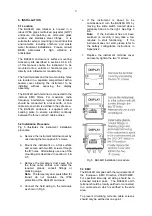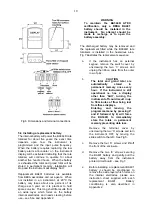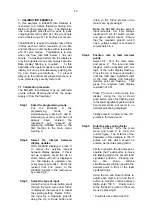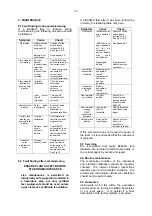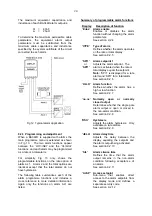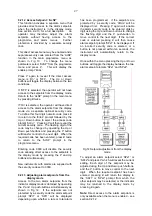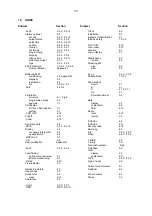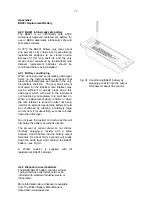
23
9. ACCESSORIES
9.1 Units of measurement and instrument
identification
All BA344D rate totalisers are fitted with a
display label behind the armoured glass
window. This label can be supplied printed
with any units of measurement and tag
information specified when the instrument is
ordered. Alternatively the information may be
added on-site via an embossed strip, dry
transfer or a permanent marker.
To gain access to the display label remove the
terminal cover by unscrewing the two 'A'
screws which will reveal two concealed 'D'
screws. – see Fig 5. Remove all four 'D'
screws and carefully lift off the front of the
instrument. Add the required legend to the
display label, or replace with a new pre-printed
label which is available from BEKA associates.
The BA344D can also be supplied with a blank
or custom engraved stainless steel plate
secured by two screws to the side of the
instrument enclosure. This plate can
accommodate:
1 row of 9 alphanumeric characters 10mm high
or 1 row of 11 alphanumeric characters 7mm high
or 2 rows of 18 alphanumeric characters 5mm
high
9.2 Alarms
The BA344D can be supplied with two solid
state single pole outputs that may be
independently programmed as high or low, rate
or total alarms with normally open or normally
closed outputs.
WARNING
These alarm outputs should not be
used for critical safety applications
such as a shut down system.
When the battery is exhausted both BA344D
alarm outputs will open irrespective of whether
normally open or normally closed outputs have
been selected. When designing a system an
open output should therefore be the alarm
condition.
Alarm annunciators on the instrument display
indicate the status of both alarms. If an alarm
delay or silence time has been selected the
annunciator will flash during the delay or
silence period.
Programmable functions for each alarm include
adjustable setpoint, alarm delay time and alarm
accept time. Hysteresis may be applied to
rate alarms.
The ‘UpdAtE’ function in the main menu
defines how frequently the total display is
updated, it also defines the interval between
alarm status updates. Six times varying
between 0.5 to 20 seconds may be selected –
see section 6.4.
Note:
Use of the alarm outputs may reduce
battery life by about 5%
9.2.1 Solid state output
Each alarm has a galvanically isolated single
pole solid state switch output as shown in Fig
11. The outputs are polarised and current will
only flow in one direction. Terminals A1 and
A3 should be connected to the positive side of
the supply.
Ron
=
5
Ω
+ 0.6V
Roff
=
greater than 180k
Note:
Because of the series protection diode
some test meters may not detect a
closed alarm output
Fig 11 Equivalent circuit of each alarm output
9.2.2 Intrinsic safety
Each of the two alarm outputs is a separate
galvanically isolated solid state switch. The
EC-Type Examination Certificate specifies that
under fault conditions the voltage, current and
power at each alarm output will not exceed
those specified for
simple apparatus
in Clause
5.4 of EN50020:1994. This allows each of the
BA344D alarm outputs to be connected to any
intrinsically safe circuit protected by a certified
Zener barrier or galvanic isolator providing that
the output parameters of each circuit do not
exceed:
Uo
=
28V dc
Io
=
200mA
Po
=
0.85W
No system certificate has been issued for the
BA344D alarm outputs, as the system
certificate for the circuit to which the alarms are
connected remains valid.
Summary of Contents for BA344D
Page 13: ...13...

